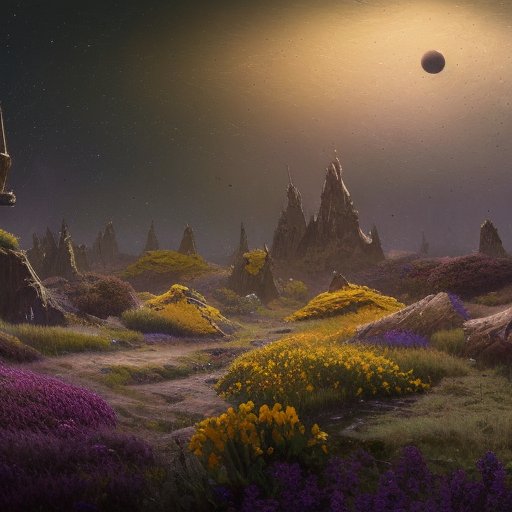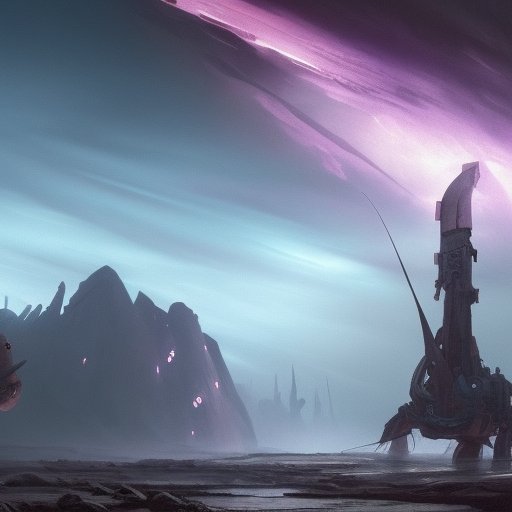
Within the cosmic infrastructure, the Dyson Sphere has been a topic of great interest. This article explores how Dyson Spheres are constructed and the potential for harnessing their power. Meanwhile, the Infrastructure for Extraterrestrial Advancements is gaining traction thanks to innovative designs for spacecrafts and habitable stations now underway. Our discussion also includes what we know (and what we don’t know) about the potential for alien life on other planets and the Deep Sea. Finally, we will explain how Science Fiction drives current scientific research and what may be expected from continued exploration.
I. Introduction
Buckle up, space cadets! The universe is calling and we’re on a mission to explore the great beyond. The stars have always ignited our imagination, and now, scientists, engineers, and explorers are teaming up to take us ever further into the unknown depths of space. From the Dyson Sphere concept to Infrastructure for Extraterrestrial Advancements, we’re witnessing an explosion of creativity and innovation aimed at breaking the limits of human knowledge.

Humanity’s fascination with the extraterrestrial dates back centuries, but telescopes and other advanced technologies have allowed us to learn more about the cosmos and what lies beyond our own planet. The idea of building a Dyson Sphere, a megastructure that could harness the power of an entire star, has been the subject of passionate debate, as well as endless creative speculation. We’ll look at what these man-made structures could mean for our future and explore the science behind building such a structure.
Meanwhile, Infrastructure for Extraterrestrial Advancements is seeing unparalleled growth in cutting-edge spacecraft and the development of habitable stations. We’ll explore existing designs and prototypes for manned and unmanned missions to other worlds. This includes a look into the most promising exploratory missions as well as the testing of potential colonies on new planets.
Of course, no discussion on extraterrestrial exploration would be complete without stirring up potential life beyond Earth. We will be looking at the possibility of underwater aliens in our own oceans and the hunt for life in other solar systems and galaxies. Additionally, we will contemplate the ethical dilemmas potentially arising from our discovery of other life forms.
We’ll also delve into the deep blue unknown that is our ocean’s depths to uncover possible answers to some of our greatest mysteries. The ocean holds incredible secrets and perhaps holds hidden life forms with extraordinary power and intelligence.
Our exploration into the unknown, whether it be space exploration or underwater discovery, is continuing to grow and evolve, pushing humanity forward, and bringing us closer together as a species united in the quest for knowledge.
II. Dyson Sphere Truths
The Dyson Sphere is the result of mankind’s insatiable desire to expand our reach beyond our planet. It’s like putting a harness on a star and directing all of its energy towards the improvement of our technology and way of life. But what are the science and engineering behind this awe-inspiring creation of human imagination?

A Dyson Sphere is a theoretical spherical shell located around a star like a second skin. It is made up of self-replicating machines capable of building each other and eventually, the Dyson Sphere itself. Applying the concept of the Law of Conservation of Energy, the construction of a Dyson Sphere would utilize the star’s energy output in a controlled manner to meet the needs of civilizations.
Currently, there are several proposed methods of creating Dyson Spheres, including Shell, Swarm, and Dyson Bubble concepts. Each version has its unique set of advantages and challenges, but all share the same fundamental concept: taking advantage of our star’s energy output.
The most significant challenge in constructing a Dyson Sphere is the materials required to do it, as well as the possibility of blocking out all sunlight from planets that orbit the star. However, research is underway in finding alternative materials and building designs to help alleviate this possibility. Scientists and engineers are working tirelessly to overcome these difficulties to materialize this breathtaking concept.
In the future, the utilization of Dyson Spheres could prove to be an excellent alternative to non-renewable fuels, such as oil, coal, and natural gas, which are finite and harmful to our environment. In summary, the concept of the Dyson Sphere is inspiring, but it is essential to uphold a thorough understanding of its implications and be aware of its limits when conceiving such incredible ideas.
III. Infrastructure for Extraterrestrial Advancements
Imagine a future where human beings could visit other worlds as easily as we travel from city to city. While this may have seemed like far-flung science fiction in times gone by, the Infrastructure for Extraterrestrial Advancements is making this an ever-increasing possibility. New designs for spacecraft and habitable stations are now in the works, drawing on the latest technology, engineering, and architectural advances.

These designs are being developed with both manned and unmanned spacecraft in mind, with the former allowing humans to explore further than we ever have before. Spacecrafts are utilizing cutting-edge technologies to become smarter, faster, and more resilient to the dangers of the unknown. From the intricacies of propulsion to new designs for sturdy spacecraft parts, there is no aspect of space travel that isn’t undergoing intense scrutiny.
Unmanned space missions are just as important in the development and design of spacecraft. These missions provide valuable information and data and can explore places where it’s too dangerous to send human beings. Additionally, unmanned missions can greatly extend exploration by operating for long durations.
Habitable space stations are being designed with the goal of establishing permanent human settlements on other planets. These stations not only offer long-term support to astronauts and researchers but are also being developed with the specific environments of target worlds in mind. The stations are likely to be prototypes of potential colonies on new planets.
The ultimate goal is for humans to live and thrive in places beyond our own planet, and we are now closer than ever before to achieving it. The quest for extraterrestrial exploration requires extraordinary breakthroughs in science, technology, and engineering, but scientists are rapidly developing the tools necessary to make this ambitious dream come true.
IV. Tentacle State of Mind
We’ve all wondered if we’re alone in the universe, but if we did discover extraterrestrial life, what could that mean for us? The implications are endless and nearly impossible to predict, but we can start by exploring potential alien encounters and their potential effects on Earth.

With advances in technology, scientists have discovered a plethora of potential new habitats for life throughout our solar system. From underground oceans on Europa to the methane lakes on Titan – it’s possible that this galaxy might be teeming with life, including multicellular organisms. What effect would such discoveries have on our way of life and the way we perceive the universe?
If we do establish contact with extraterrestrial life-forms, what would be the response? Will we welcome them with open arms or keep them at an arm’s distance? And how and under what conditions can this contact ever take place?
Furthermore, there are ethical considerations to be made before pursuing contact with other forms of life, such as considering the possibility of dividing our limited resources with these new found life forms. Though, we have to be mindful that the discovery of life beyond our planet holds the potential for us to gain more insight into the nature of the universe as well as of ourselves.
However, let’s not forget about alien life right here on Earth, particularly in the depths of the oceans. The possibility that these creatures possess mind-boggling intelligence and abilities is very real. As we continue exploring the sea’s great abyss, we may discover life forms that defy our current understanding of biology, evolution and intelligence.
It’s important to ask ourselves if we are ready for the truth about extraterrestrial life. Are we prepared to have our existential questions laid out bare before us? Or are we destined to fall back on beliefs we clung to ages ago? Ultimately, the discovery of such a life form would bring both the beginnings of our darkest fears, as well as the beginnings of the most bountiful opportunities.
V. Tennessee Dive
Hold onto your oxygen tanks, because we’re taking a wild ride into the depths of the ocean. Known as the last great frontier, the ocean floor holds a wealth of mysteries yet to be uncovered. But with new technologies and a thirst for exploration, humanity is poised to take on the challenge.

From the tempestuous waves of the sea to the darkest corners of the abyss, exploring the ocean is an adventure in and of itself. Yet, it can lead to groundbreaking discoveries that have the potential to change our understanding of life as we know it. We will explore these new technologies and view the ethical questions surrounding possible ocean lifeforms that may be encountered, especially if they are intelligent or sentient.
The ocean also provides us with many precious resources, such as minerals and fuel. However, extracting these resources has the potential to create environmental disasters or lead to conflicts. From fishing to energy harvesting, we will investigate how human activities can impact and damage ocean ecosystems.
History is also written deep in the ocean’s trenches. Archaeologists and scientists are now uncovering ancient shipwrecks, underwater caves, and even lost civilizations. The ocean floor provides clues to past life and societies and serves as a time capsule for humanity’s evolution. We’ll dive into the legends of Atlantis, as we explore what little we know of its watery domain and consider whether any lessons can be learned from its downfall.
Humans have yet to traverse the deepest parts of the ocean, with only a small percentage of depths quantifiably explored. However, new submarines and diving technologies are allowing us to delve deeper and explore further afield than ever before. Yet ocean exploration continues to push boundaries, intrigue us, and capture our imagination.
VI. The Future of Exploration
Science fiction has always been one of the greatest generators of innovative ideas and technological progress when it comes to exploring the unknown. From Jules Verne to Isaac Asimov, science fiction writers have described futuristic worlds filled with unimaginable feats of technology. Sometimes what we imagine may seem strange or impossible, but these works plant the seeds of curiosity and inspiration in our minds that drive real-world science forward.

Now, more than ever, science fiction influences scientific projects and inspires technological developments. Concepts that were once deemed impossible or mere fantasy can now become plausible thanks to scientific discoveries. For instance, some ideas presented in science fiction such as dystopian worlds, are warning us of consequences and potential dangers in what we’re developing.
Space exploration is one field that science fiction has inspired, from Arthur C. Clarke’s portrayal of humans stepping off of Earth and colonizing other planets to Gene Roddenberry’s vision of the United Federation of Planets. We’re seeing this through the continued growth of space exploration and technologies that enable it. This technology has been developed thanks to the contributions of science fiction writers and enthusiasts who have dreamed up some of the most innovative concepts.
Science fiction has not only inspired technology, but it also drives the research community to push the boundaries of knowledge and develop improvements to existing research methods. From artificial intelligence to quantum physics, science fiction has opened our minds to new possibilities and new frontiers of science, bringing us closer to becoming an interstellar species.
As long as we imagine the impossible, we will continue to explore and expand our knowledge of the universe. Science fiction and scientific research will remain intertwined, inspiring each other and creating new opportunities for expanding our understanding of the cosmos beyond.
VII. Conclusion
As we have seen, the exploration and colonization of space and the deep sea hold a wealth of potential benefits for humanity. However, the pursuit of these great endeavors also comes with risks and burdens that must be carefully considered.

One major pro of pushing the boundaries of discovery is the potential for technological advancements, improving conditions for human existence, and tackling global challenges such as climate change and resource depletion. Moreover, the exploration and discovery of alien worlds could be key to better understanding our own place in the universe and unlocking the mysteries of life itself.
Yet, there are also significant cons to bear in mind. One of the most significant has to do with the ethical implications of our activities. How can we ensure that our exploration and discovery respects other life forms, particularly if they are, as in many scientific theories, lower in technological advancement? The economic costs of scientific developments and exploration in space and the deep sea could also be a weighty deliberation, with our resources’ limitations in mind.
Additionally, we must think of the practical challenges and dangers that come with pushing beyond the limits of human knowledge and control—such as the risks of space radiation, unknown pathogens, political exploitation, among others. The construction and maintenance of Dyson Spheres or spacecraft and underwater colonies are only two examples of the staggering challenges we face.
Nevertheless, if we fail to undertake these grand exploits in the name of science, we may never discover the full extent of the potential of our own or other worlds, leaving us limited and alone in the universe. As we continue further into the unknown, we must ensure that we weigh these advantages and disadvantages, and make decisions that will continue to propel our species forwards, both on and off our planet.






